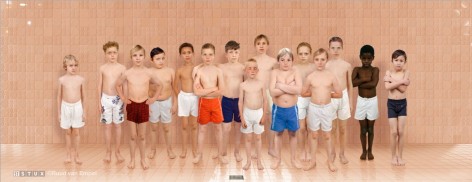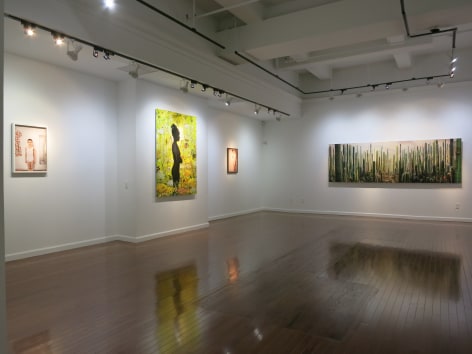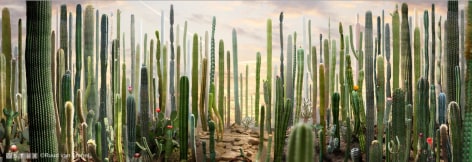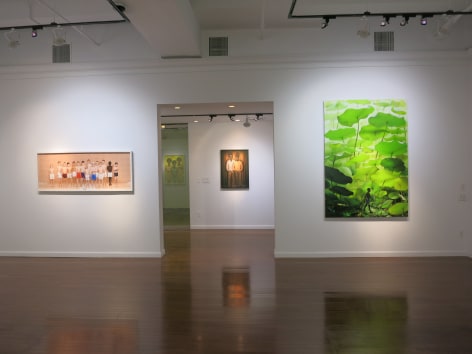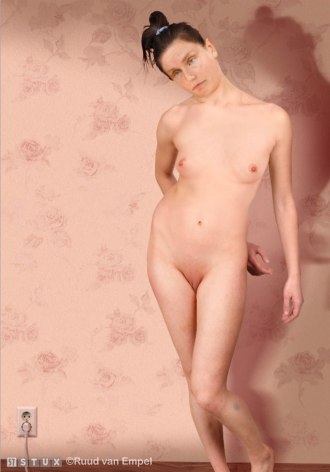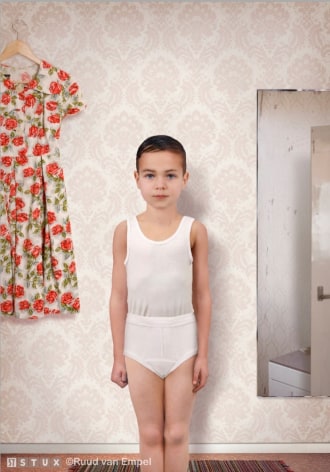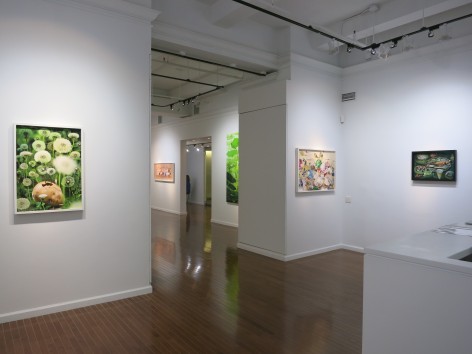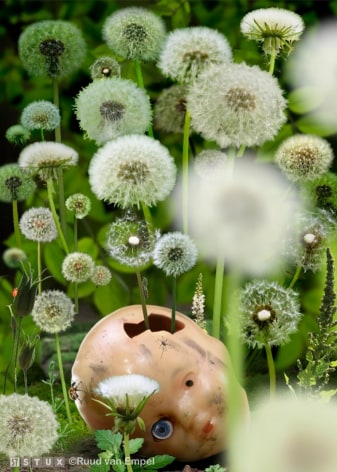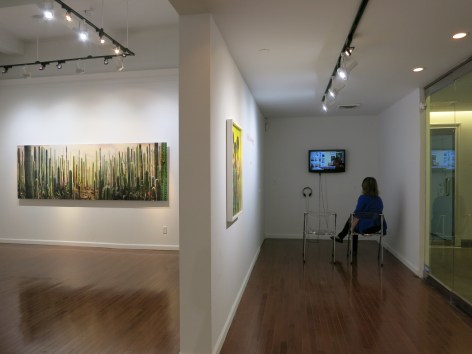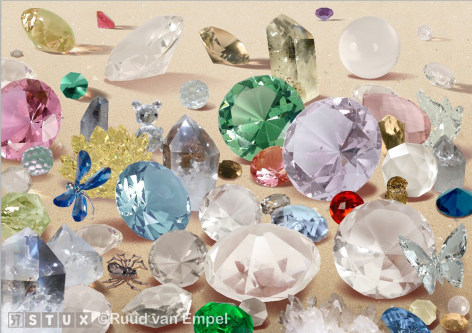Stux Gallery is pleased to announce “Identities”, an exhibition of new digital-composite photographic works by Ruud van Empel. This will mark Ruud van Empelʼs seventh solo exhibit at Stux Gallery. Widely recognized and best known for his carefully constructed photo-collages of children in mysterious and otherworldly paradises, his images draw the viewer into a place that is simultaneously illusory and yet undeniably realistic.
Van Empelʼs images tackle the problem of representation with the utilization of highly stylized and idealized images. By stitching together fragments taken from an archive of thousands of images he photographs himself, he offers quite often hyperbolized representations of childhood and identity. One may notice the absence of perspective in his photographs and the flattening of images. With this, in combination with the passive stances of his subjects, van Empel removes the figures of any meaningful contextual framework and assigns the viewer a role of uncertainty. One is presented with oneʼs responsibility in dealing with these idealizations, their relativity and the associated clichés. Devoid of any precisely defined role, the spectator is confronted with his own desires and fears. Closely linked to the genre of portraiture, the moral concept is transformed and oriented towards oneʼs own conscious and self-reflective commentary.
In his new panorama, Club, van Empelʼs composite of young boys in varying stages of adolescence are grouped together, prepared for a swim class. In a departure from his usual lush and ethereal landscapes, the background is reduced to the cold and shiny sterility of tiles. Juxtaposed against the minimal setting and dressed in only their bathing suits, the boys manifest their individuality, accented by variations of pose, facial expression, and clothing. Since each face is a compilation of many other faces, each child is equally and simultaneously real and fictive, elevating the work to a universallevel. Most importantly, Club, as well as another work titled Hero, speaks to a collective memory on the struggles of adolescence in which the subjects are engaged in the formation of their identities individually as well as in relation to one another.
In another series consisting of Nature #1, Nature #2, and Theatre #8, van Empel turns his attention away from human subjects and onto natural landscapes. Specifically in Nature #2, he concentrates on the themes of life and death. Dandelions sprout out of the cracked dollʼs face, which stares blankly out at the viewer with its one intact eye. Although the dollʼs face represents death, life and rebirth continue around it. A closer look reveals crawling insects and the rich hues of the surrounding vegetation, indicating a pervasive strength in life. Here, van Empel reminds the observer of the beauty in life and death as the dandelions spring forth determinedly from the death and decay of the doll head.
In his newest works Identity #1, Identity #2, Identity #3, Perception, Boy, Atmosphere, Figure, Promise, and Nude #4, van Empel continues to focus on the subject of children. In the eponymously titled Identity #2, the figures of three girls emerge from a romantically lush and wooded landscape appearing as though from another time period, a reflection of the viewerʼs own childhood reminiscences. Van Empel is able to show the viewer an idealized and transfigured image of beauty in a hermetically sealed environment. Interpretation of the subjects and their passive, almost perfect, smooth appearances can be ambiguous: they can become a personification of innocence and simplicity or they can appear as if in judgment of the viewer. The formal clothing of the subjects contrasts with the natural setting; the girls are dressed in their pristine Sunday best. However, the floral pattern of their clothing speaks to an underlying theme of synthetics. The girls themselves are a composite of many other images while their clothing is an artificial extension of the Amazonian background.
“Identities” will also feature van Empelʼs Still Life Cristals and Still Life Funghi. In Still Life Cristals, various glittering jewels wink out enticingly at the viewer. The jewels mimic the beguiling beauty of the ethereal landscapes that van Empel often depicts. Upon closer inspection, one can notice that some of the stones are formed in the image of natural wildlife. However, as in his landscapes, there is an undercurrent of discomfort and foreboding as the jewels lie scattered and in disarray. Here, van Empel encourages the viewer to look beyond the attractiveness of the crystals and consider perhaps their origin and the lengths and tribulations one may have to go to obtain these gems. In both Still Life Cristals and Still Life Funghi, van Empel considers the concept of a beautiful decay, as well as life in death and conversely, death in life.

